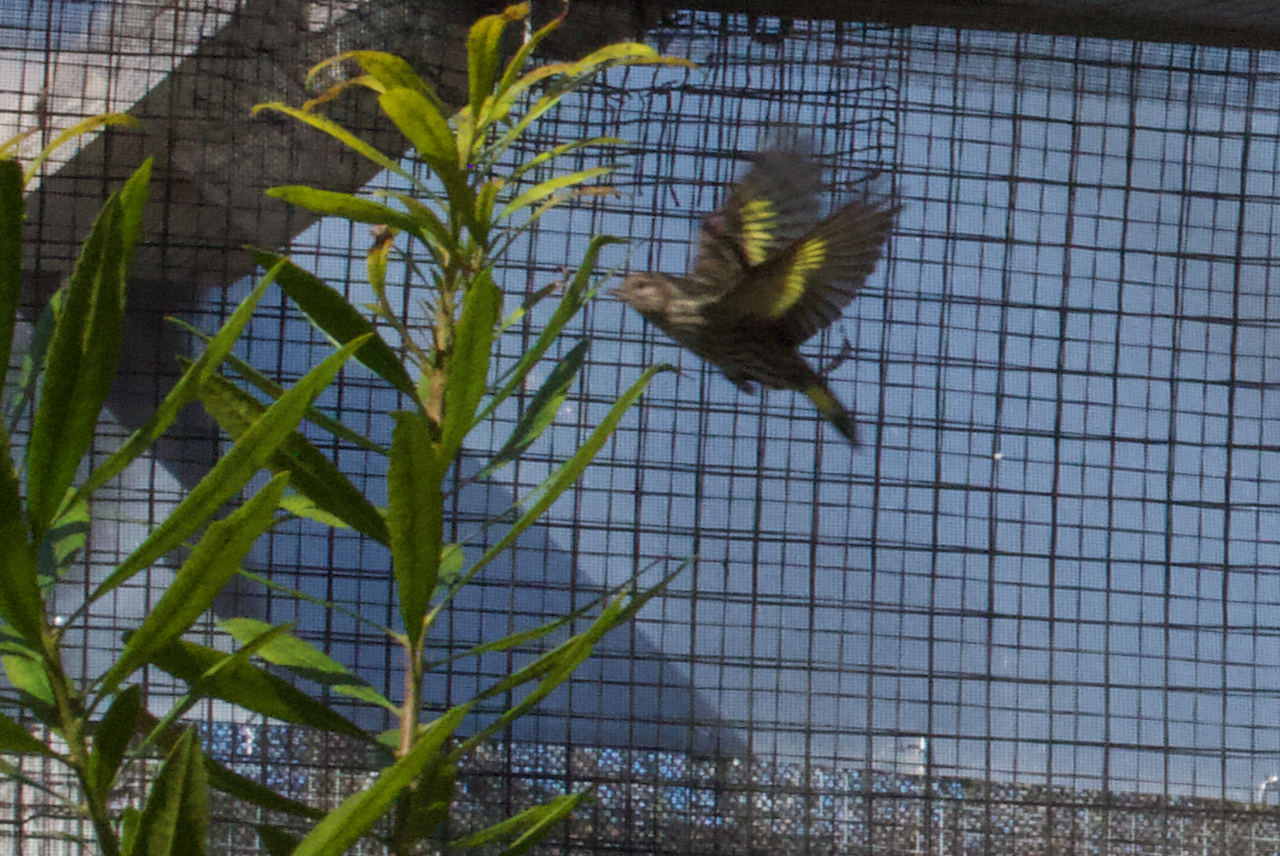
As anyone with a bird feeder in their backyard can tell you, Winter 20/21 was filled to the brim and overflowing into the saucer with Pine Siskins (Spinus pinus), a member of the finch family (Fringillidae).
Irruptions like this aren’t that unusual – happening every few years or so –
but over the winter, southern Canada and large parts of the United States saw the largest irruption in ‘recorded history’.*
Irruptions occur when a critical food in a species’ wintering grounds is in short supply – for Pine Siskins this means conifer seeds, and Spruce seeds are a favorite – driving the birds south in search of a meal. Starving and desperate, backyard bird feeders must seem like the luckiest break in the world to them.

Unfortunately, when large numbers of birds are concentrated at feeders, the condition are perfect for the spread of an ordinary bacteria, Salmonella. Carried in the intestines of birds and shed through the feces, the closely grouped finches hungrily foraging are constantly exposing each other to the bacteria. The disease that results from the infection, salmonellosis, is often fatal, causing irreparable harm to each bird’s gastro-intestinal tract. Once visibly sick – unable to fly, lethargic, emaciated – nearly all Siskins die. This is the result we saw all across North America over the Winter.
In response to the enormous flocks of starving Pine Siskins, and the attending salmonellosis outbreak, a massive campaign to stop the infectious spread was mounted, with Federal, State and non-governmental organizations stepping in to recommend that all bird feeders be pulled until the outbreak was over.

At Humboldt Wildlife Care Center, we admitted our first Pine Siskin of winter on November 16, 2020. He died two days later. By the end of 2020 we admitted 20 Siskins and only one survived to be released, but that bird did not have any symptoms of salmonellosis upon admission after hitting a window. We have now admitted 55 Pine Siskens, between November 16 and today, March 5. Today, we have one Siskin in care, another window strike, who is otherwise in good health. It was early-mid February when dying Siskins stopped coming in to our clinic. Since then, each bird has been cat caught or a window strike. Because the disease seems to have slowed considerably, the birds we’re admitting often have a much better prognosis.
Of the other 54 Siskins, 9 have been released, 7 came in DOA, 22 died in the first 24 hours in care, 3 died after a day had passed, and 13 were humanely euthanized due to the severity of their infection, or wounds caused by window strikes or house cats. Of course there was some overlap between sick Siskins and cat caught Siskins, due to the sick ones being more vulnerable.
HWCC did not join in the chorus of those recommending that bird feeders be taken down, on the simple reasoning that starvation was driving this concentration of birds, and that reducing available food would make it worse, further reducing availble feeding locations and increasing the density of birds, or simply move the tragedy to a place where the death and suffering wouldn’t be seen.

There is no easy test to determine if our patients have salmonellosis. We rely on clinical symptoms and context. An irruption coupled with Siskins admitted who are very thin, lethargic and sick is the only real diagnosis we have while the patient is alive. While some suggest that euthanasia is the only responsible course of treatment, without solid proof that these birds suffer from the bacteria, that is not a course we could follow.
While there are no studies to support this view, it seems that when hungry refugees show up at your door, the thing to do is provide, not deny, succor. Taking into consideration the unhealthy density of Siskins at feeders leads us to think that other areas could be used to provide more food, in a less concetrated manner than backyard feeders. Why not distribute food freely across parks and refuges? Intervention in nature when nature has been razed, pummeled, roped, when “they’ve tied her with fences and dragged her down” is the only morally responsible thing to do.

For now, the irruption in our region is over. Soon migration will completely make over our world and a whole new cast of characters will be at our feeders, in our yards, singing in our forests and towns. And when the human-modifed world causes our wild neighbors harm, we’ll be here to do what we can that is best for each individual.

Our doors are open each and every day of the year to our region’s injured and orphaned wild neighbors in need. Your support makes that possible. Please DONATE today, if you can! Thank you!!!
- recorded history is a fable…

